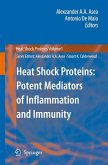Heat illnesses exist along a continuum starting with the mild condition of heat exhaustion and progressing to heat injury and heat stroke. Heat stroke is a life-threatening condition clinically characterized by a severe elevation in body temperature with central nervous system dysfunction that often includes combativeness, delirium, seizures, and coma. Classic heat stroke is experienced primarily by the very young or elderly during annual heat waves. Exertional heat stroke is a condition experienced by young, fit individuals during strenuous physical activity in hot or temperate environments. Heat stroke sequelae are a consequence of heat injury to the tissues in combination with coagulopathies and a systemic inflammatory response syndrome (SIRS) that often culminates in multi-organ system dysfunction or death. Endotoxin leakage across ischemic-damaged gut membranes is thought to initiate the SIRS with cytokines and other inflammatory mediators involved in this multi-factorial process. Rapid cooling at the time of heat stroke collapse is the most effective treatment to limit the severity of organ injury, but does not prevent long-term sequelae in all individuals. Unfortunately, there is limited understanding of the mechanisms mediating downstream effects of the SIRS on multi-organ injury and there are no clinical treatments to ensure recovery. Rather, many heat stroke victims experience permanent neurological dysfunction and peripheral organ injury that require months or years to resolve. Current research efforts are focused on identifying better diagnostic and prognostic biomarkers of organ injury for development of more effective pharmacologic strategies to improve recovery.
Hinweis: Dieser Artikel kann nur an eine deutsche Lieferadresse ausgeliefert werden.
Hinweis: Dieser Artikel kann nur an eine deutsche Lieferadresse ausgeliefert werden.








